HP 425 802.11n Dual Radio Access Point Series
Working in unison with HP controllers, the HP 425 802.11n Dual Radio Access Point Series delivers high-performance networking solutions. The enhanced controller architecture scales to IEEE 802.11n without requiring a controller replacement. The controller provides advanced radio resource management (RRM), including client load balancing and interference mitigation. The HP wireless controllers support a fast-roaming capability-an important feature, especially for VoIP communications.
The HP 425 access point works in managed mode with an HP wireless LAN controller. The access points provide RF spectrum analysis with detection and classification of non-IEEE 802.11 interference, and have the ability to automatically avoid interference. Wireless security is comprehensive with integrated wireless IDS and support for internal and external authentication, authorization, and accounting (AAA) servers; built-in stateful firewall; per-user VLAN mapping; and authentication.
In addition to working with the HP MSM controllers, the access points work with the new HP 10500/7500 20G Unified Wired-WLAN Module, the HP 800 Series Unified Wired-WLAN Switch, and the HP WX5002/5004 wireless controllers.
- Dual radio-two spatial stream access supporting 300 Mb/s per radio
- Supports embedded antennas as well as an optional external antenna
- Powered via IEEE 802.3af PoE or local power supply
- Comprehensive WLAN security
- Lifetime Warranty 2.0 with 24×7 phone support for three years
Features
Management
- Wi-Fi Clear Connect – provides a system-wide approach to improving WLAN reliability by proactively determining and adjusting to changing RF conditions; helps optimize WLAN performance by detecting interference from Wi-Fi and non-Wi-Fi sources using spectrum analysis capabilities built into the access points, identifying rogue activity, and making decisions at a system-wide level
- Advanced radio resource management –
- Automatic radio power adjustments – include real-time power adjustments based on changing environmental conditions and signal coverage adjustment
- Automatic radio channel – provides intelligent channel switching and real-time Interference detection
- Intelligent client load balancing – determines number of clients across neighboring APs and adjusts client allocation to balance the load
- Airtime fairness – provides equal RF transmission time for wireless clients
- Spectrum analysis -Integrated IDS – detects and locates unknown and rogue devices (see controller data sheet for details)
- Power/frequency spectrum analysis – measures noise from IEEE 802.11 remote sources
- Signal detection/classification – identifies source of RF interference, for example, Bluetooth®, cordless phones, and microwave ovens
- Evaluation of channel quality – helps detect severe channel degradation and improves the reporting of poor RF performance
- Access point management – provides secure Web browser (SSL and VPN), command-line interface, SNMP v2c, SNMP v3, MIB-II with traps, and RADIUS Authentication Client MIB (RFC 2618); offers embedded HTML management tool with secure access (SSL and VPN); implements scheduled configuration and firmware upgrades from a central controller
- HP Intelligent Management Center and Wireless Services Manager Software – provide central management for discovery, logging, status, and configuration management
- Diagnostics – records association, authentication, and DHCP events in client event log; packet capture tool for Ethernet and IEEE 802.11 interfaces (PCAP format); includes data rate matrix
- Enhanced AP survivability – continues to operate using the old IP address while the AP searches for a new controller
- Compatible with HP controllers and unified switches and modules –
- HP MSM720, MSM760, MSM765zl and MSM775zl version 6.2, minimum
- HP WX5000 Access Controller Series; controller software version CMW520-R2308P29-EI, minimum
- HP 10500/7500 20G Unified Wired-WLAN Module; software version CMW520-R2308P29, minimum
- HP 830 Unified Wired-WLAN Switch Series controller software version CMW520-R3308P29, minimum
Quality of Service (QoS)
- Rate limiting – supports per-wireless client ingress-enforced maximums and per-wireless client, per-queue guaranteed minimums
- Centralized traffic – maintains Layer 2 and Layer 3 QoS settings when using centralized traffic or guest access
- IEEE 802.1p prioritization – delivers data to devices based on the priority and type of traffic
- Wireless -SpectraLink Voice Priority (SVP) support – prioritizes SpectraLink voice IP packets sent from a SpectraLink NetLink SVP server to SpectraLink wireless voice handsets to help ensure excellent voice quality
- L2/L3/L4 classification – IEEE 802.1p VLAN priority, SpectraLink SVP, and DiffServ
- Virtual Service Community (VSC) – assign Wi-Fi MultiMedia (WMM), IEEE 802.11e EDCF, and Service-Aware priority
- VoIP call capacity – supports 12 active calls per radio, maximum
Connectivity
- IEEE 802.3af Power over Ethernet (PoE) support – simplifies deployment and dramatically reduces installation costs by helping to eliminate the time and cost involved in supplying local power at each access point location
- Local power option – offers 48V DC power connector for use with an optional power supply when PoE is not available
- Auto-MDIX – adjusts automatically for straight-through or crossover cables on the Ethernet interface
- Console port – aids problem resolution
Mobility
- Bandsteering – redirects 5 GHz-capable clients automatically to the less-congested 5 GHz spectrum
- HP 425 Antenna -Anywhere, anytime wireless coverage – dual-radio IEEE 802.11b/g/n and 802.11a/n access point; per-radio software-selectable configuration of frequency bands; self-healing, self-optimizing local mesh that extends network availability; Wi-Fi Alliance Certifications for interoperability with all IEEE 802.11a/b/g/n client devices; and IEEE 802.3af PoE
- Embedded antenna – provides excellent coverage through use of embedded high-gain antennas (4 dBi antenna at 2.4 GHz and 5 dBi antenna at 5 GHz); no need for the added cost of external antennas
- Optional external antenna – includes four indoor RP-SMA connectors for use with optional external antennas
- Medical standards – meets the European EN60601-1-2 standard for healthcare
- Virtual Service Communities (VSCs) – includes up to 16 SSIDs per radio, each with unique MAC address and configurable SSID broadcasts; individual security and QoS profiles per VSC; configurable DTIM and minimum data rate per VSC; VSCs that can be mapped to separate IEEE 802.1Q VLANs; WMM and/or WMM-PS; a security filter; and an IP filter
- AP client access control functions –
- offers IEEE 802.1X authentication using EAP-SIM, EAP-FAST, EAP-TLS, EAP-TTLS, and PEAP
- delivers MAC address authentication using local or RADIUS access lists
- provides RADIUS AAA using EAP-MD5, PAP, CHAP, and MS-CHAPv2
- supports RADIUS Client (RFC 2865 and 2866) with location-aware support
- provides Layer 2 wireless client isolation
Security
- Integrated IDS support -IEEE 802.1X support – provides port-based user authentication with support for Extensible Authentication Protocol (EAP) MD5, TLS, TTLS, and PEAP with choice of AES, TKIP, and static or dynamic WEP encryption for protecting wireless traffic between authenticated clients and the access point
- Automated AP and client classification – reduces manual effort (administrator can override AP classification)
- Comprehensive detection capabilities – detects a wide range of attacks
- Flexible event reporting – enables configuration of which events will result in notifications
- Location tracking capabilities – helps identify the rogue device location
- Flexible deployment models – supports time slicing or dedicating a radio to detect full-time (see the controller datasheet for details)
- Choice of IEEE 802.11i, WPA2, or WPA – locks out unauthorized wireless access by authenticating users prior to granting network access; robust Advanced Encryption Standard (AES) or Temporal Key Integrity Protocol (TKIP) encryption secures the data integrity of wireless traffic
- TKIP/WEP encryption – is supported only on legacy IEEE 802.11a/b/g clients as it has been deprecated from the IEEE 802.11n standard
- Local wireless bridge client traffic filtering – prevents communication between wireless devices associated with the same access point
 HP LaserJet 4300 series Q1339A Black Print Cartridge
1 × 809.60 د.إ
HP LaserJet 4300 series Q1339A Black Print Cartridge
1 × 809.60 د.إ 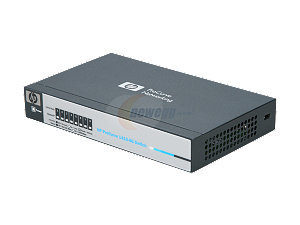 HEWLETT-PACKARD 1410-8G SWITCH -8 Ports - 8 x RJ-45 - 10/100/1000Base-T / J9559A
1 × 279.00 د.إ
HEWLETT-PACKARD 1410-8G SWITCH -8 Ports - 8 x RJ-45 - 10/100/1000Base-T / J9559A
1 × 279.00 د.إ 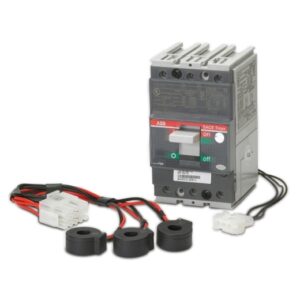 3-Pole Circuit Breaker, 80A, T1 Type for Symmetra PX250/500kW – PD3P80AT1B
1 × 1,399.00 د.إ
3-Pole Circuit Breaker, 80A, T1 Type for Symmetra PX250/500kW – PD3P80AT1B
1 × 1,399.00 د.إ  HP 1TB 6G SAS 7.2K rpm SFF (2.5-inch) Dual Port Midline 1yr Warranty Hard Drive 605835-B21
1 × 2,199.00 د.إ
HP 1TB 6G SAS 7.2K rpm SFF (2.5-inch) Dual Port Midline 1yr Warranty Hard Drive 605835-B21
1 × 2,199.00 د.إ 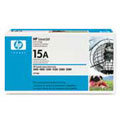 HP C7115A Black Print Cartridge for LJ 1000 1200 1005 4014 3300
2 × 399.00 د.إ
HP C7115A Black Print Cartridge for LJ 1000 1200 1005 4014 3300
2 × 399.00 د.إ 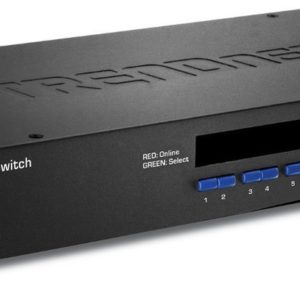 TRENDnet Rack Mount 16-Port USB KVM Switch TK-1603R, console side supports USB or PS2
1 × 1,099.00 د.إ
TRENDnet Rack Mount 16-Port USB KVM Switch TK-1603R, console side supports USB or PS2
1 × 1,099.00 د.إ  04 3550600
04 3550600 052 7036860
052 7036860
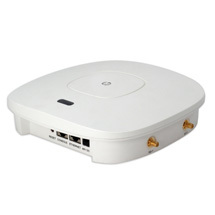

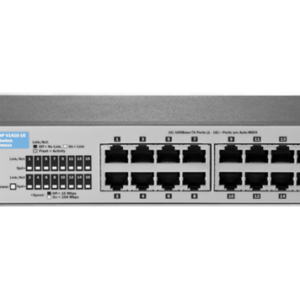

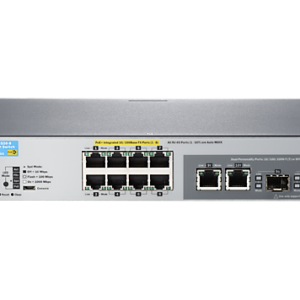

There are no reviews yet.